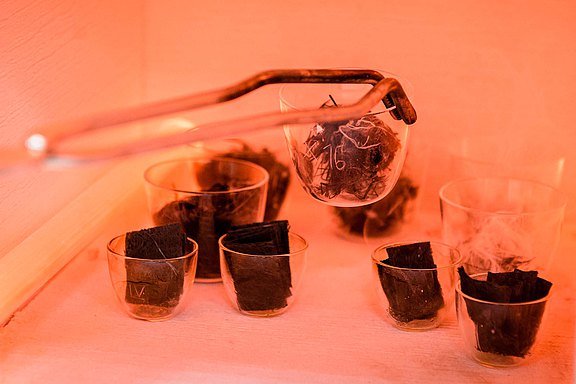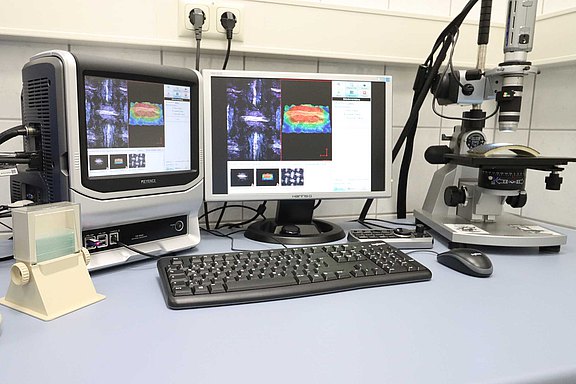To interpret the results of the mechanical bond tests, statements on the material structure and/or the material composition are often indispensable. Light microscopes with different contrast methods (transmitted light, reflected light, bright field, dark field) are available for investigations of the material structure. With these, the materials can be viewed directly or after appropriate preparation of a microsection. Various analytical methods have been developed for determining the material composition. Thus, depending on the expected material (mineral, glass, carbon, long or short fibers, powdery fillers), fillers and reinforcing materials can be analyzed by thermal separation or chemical dissolution methods. The fillers and reinforcing materials obtained in this way can subsequently be examined in turn for their size and size distribution by microscopic methods.
In addition to these accompanying material investigations, it is also possible to record fast-moving processes with a high-speed camera and analyze the motion sequences by means of slowed-down playback.

